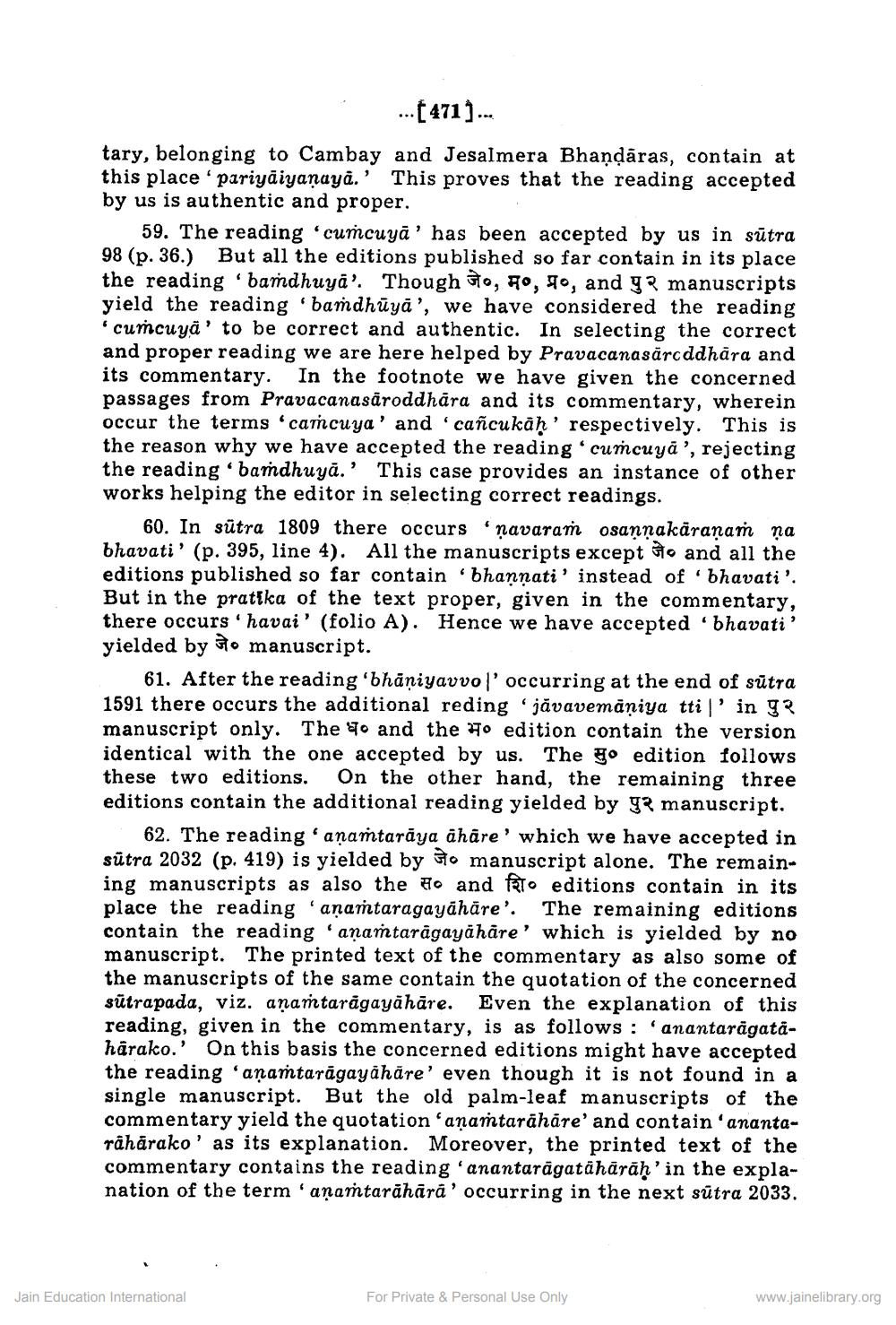________________
...[471]...
tary, belonging to Cambay and Jesalmera Bhaṇḍāras, contain at this place' pariyāiyaṇayā.' This proves that the reading accepted by us is authentic and proper.
59. The reading 'cumcuya' has been accepted by us in sutra 98 (p. 36.) But all the editions published so far contain in its place the reading 'bamdhuya'. Though o, o, o, and y manuscripts yield the reading 'bamdhuyā', we have considered the reading 'cumcuya' to be correct and authentic. In selecting the correct and proper reading we are here helped by Pravacanasärcddhāra and its commentary. In the footnote we have given the concerned passages from Pravacanasāroddhāra and its commentary, wherein occur the terms 'camcuya' and 'cañcukaḥ' respectively. This is the reason why we have accepted the reading 'cumcuya ', rejecting the reading 'bamdhuya.' This case provides an instance of other works helping the editor in selecting correct readings.
60. In sutra 1809 there occurs navaram osannakäraṇam na bhavati' (p. 395, line 4). All the manuscripts except and all the editions published so far contain bhannati' instead of 'bhavati'. But in the pratika of the text proper, given in the commentary, there occurs' havai' (folio A). Hence we have accepted 'bhavati' yielded by manuscript.
61. After the reading 'bhāniyavvol' occurring at the end of sūtra 1591 there occurs the additional reding 'javavemaniya tti |' in g? manuscript only. The and the Ho edition contain the version identical with the one accepted by us. The o edition follows these two editions. On the other hand, the remaining three editions contain the additional reading yielded by 92 manuscript.
62. The reading 'aṇamtaraya ähäre' which we have accepted in sūtra 2032 (p. 419) is yielded by manuscript alone. The remaining manuscripts as also the o and fo editions contain in its place the reading anamtaragayāhāre'. The remaining editions contain the reading 'anamtarāgayāhāre' which is yielded by no manuscript. The printed text of the commentary as also some of the manuscripts of the same contain the quotation of the concerned sütrapada, viz. anamtaragayāhāre. Even the explanation of this reading, given in the commentary, is as follows: anantarāgatahārako.' On this basis the concerned editions might have accepted the reading 'aṇaṁtarāgayāhāre' even though it is not found in a single manuscript. But the old palm-leaf manuscripts of the commentary yield the quotation 'anamtarahāre' and contain 'anantarahārako' as its explanation. Moreover, the printed text of the commentary contains the reading 'anantarāgatähārāḥ' in the explanation of the term 'anamtarāhārā' occurring in the next sutra 2033.
Jain Education International
For Private & Personal Use Only
www.jainelibrary.org




